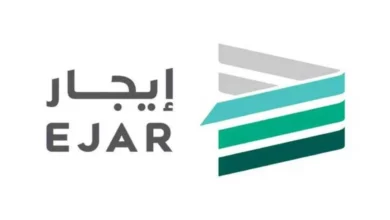The True Cost of Solar Panel Installation in India: A Detailed Analysis

The True Cost of Solar Panel Installation in India: A Detailed Analysis: Are you considering installing solar panels at your home or business in India? While it is an environmentally friendly and cost-effective option in the long run, the initial installation cost can be substantial. In this blog post, we will dive into the true cost of solar panel installation in India and take a detailed look at the factors that affect the cost. From equipment and labor costs to government incentives and financing options, we will provide you with all the necessary information to make an informed decision about solar panel installation in India.
Ideal geographical conditions make India a leading generator of solar energy
India enjoys a strategic location in the tropical region, which provides it with extended hours of sunlight throughout the year. With ideal geographical conditions, the country is one of the leading generators of solar energy. According to data released by the Ministry of New and Renewable Energy, India has an installed solar capacity of 38.79 GW as of September 2021. The country has set a target of installing 450 GW of renewable energy, including solar, wind, biomass, and small-hydropower, by 2030.
Despite India’s vast solar energy potential, solar panel installation costs remain a concern for many. However, with increased government incentives, solar panel installations are becoming more accessible. In 2010, the government introduced the Jawaharlal Nehru National Solar Mission to promote solar power generation in India. It offered a subsidy of up to 30% for residential solar power systems. The government has also made it mandatory for all government buildings to utilize solar energy. Additionally, state governments are offering lucrative subsidies for solar panel installations, making it easier for individuals to adopt solar energy.
Solar panel installations not only reduce electricity bills but also provide a clean and sustainable energy source. With India’s growing energy demand, solar energy can play a crucial role in meeting the energy requirements. The cost of solar panel installations has significantly reduced in recent years, and government incentives have made it more accessible than ever. With the benefits of reduced electricity bills and a clean energy source, individuals should consider the long-term advantages of solar panel installations. India’s ideal geographical conditions and the government’s push towards renewable energy make it the ideal time to invest in solar energy.
Rooftop solar panels becoming popular due to low installation cost
Rftop solar panels are gaining popularity in India due to their low installation cost and other cost-saving benefits. In fact, India is one of the leading generators of solar energy in the world owing to its geographical location. However, before installing a rooftop solar panel, certain factors must be considered to maximize its benefits. Firstly, the condition of the roof must be inspected to ensure it can withstand the weight of the solar panels, and there should be enough space for installation. Additionally, the roof should be shade-less and have a slope of 10 to 30 degrees to allow proper drainage of rainwater and removal of debris. Lastly, the rate of consumption of the building must be analyzed to determine the number and type of solar panels suited for the energy needs of the building.
Condition of the roof must be inspected before installation
Before installing a rooftop solar panel in India, it is crucial to inspect and assess the condition of the roof. The rooftop solar panels have a service life of 20-25 years, but if the roof is old or damaged, the installation may not last for its full-service life. If a damaged roof is not repaired before solar panel installation, the cost of dismantling and re-installation will have to be borne by the owner. The roof should also have enough space to accommodate the solar panels and should be shade-less so that maximum sunlight can be trapped during the daytime. The slope of a roof also plays a crucial role in determining the efficiency of solar panels. Finally, the roof’s inclination should be in the range of 10 to 30 degrees to allow proper drainage of rainwater and removal of debris.
High solar potential and cost of modules sourced from China contribute to India’s low production cost
India become one of the major players in solar power in recent years, installing around 50 GW of solar photovoltaic (PV) capacity in the last decade. As of 2021, the country is looking to establish a domestic solar manufacturing chain, from polysilicon and wafers to cells and modules. Several companies have shown interest in solar manufacturing due to the government’s policies and incentives. It is predicted that by 2025, India will have about 40 GW of module production, making it one of the leading solar manufacturers worldwide.
One of the factors that contribute to India’s cost competitiveness in solar manufacturing is its high solar potential. Additionally, the cost of modules sourced from China, which is the world’s largest solar module manufacturer, is relatively high. As a result, Indian companies have been able to manufacture solar panels with lower production costs, making their products more affordable. The demand for solar panels is high in India due to significant investments in the solar energy sector, which is expected to further boost the country’s solar manufacturing capabilities.
The Indian government has implemented policies to support the development of a complete solar manufacturing ecosystem in the country. The policies provide incentives for companies involved in solar manufacturing, including tax breaks, subsidies, and financial assistance. The government also plans to impose safeguard duties on solar imports from China and Malaysia, thereby promoting domestic solar manufacturing. Furthermore, the government is providing assistance to establish testing and certification facilities to ensure the quality of domestically manufactured solar products.
India’s low production costs, combined with high solar potential, make the country a perfect destination for solar manufacturing. The government’s policies and incentives have encouraged several new solar manufacturing companies to establish their business in India. With India’s manufacturing capabilities expected to increase significantly in the coming years, the country is poised to become one of the leading solar manufacturers globally. The increased domestic manufacturing will also create job opportunities and generate economic growth.
The Indian government is encouraging the establishment of ancillary manufacturing units to support the solar manufacturing value chain. These include facilities to manufacture solar product components such as inverters and batteries. By developing ancillary manufacturing units in India, the country can create a self-reliant solar industry, reducing its dependence on foreign components. In addition, the government plans to implement R&D and training programs to support and enable a fully integrated modern solar manufacturing ecosystem in India. R&D efforts will focus on developing new solar technologies, enhancing manufacturing processes, and exploring innovative business models.
In conclusion, India’s solar manufacturing capabilities are increasing rapidly due to the favorable policies and incentives provided by the government. The country’s high solar potential and the high cost of solar modules imported from China make Indian-manufactured solar panels more affordable. With the government’s support, India is poised to become one of the leading solar manufacturers globally, providing jobs and economic growth to the country. The establishment of ancillary manufacturing units and concerted R&D and training programs will further support the growth of a modern solar manufacturing ecosystem in India.



